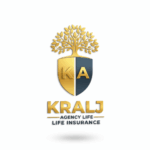How whole life Insurance works
A whole life policy works by combining a death benefit with a cash value saving component.
Premium allocation: A portion of your premium payments goes toward the cost of the death benefit, while the rest is directed into the cash value account.
Guaranteed growth: The cash value grows over time at a guaranteed , tax-deferred rate.
Fixed premiums: Your premium payments are locked in and will never increase, making budgeting more predictable.
Dividends: Some mutual insurance companies may also pay annual dividends, which can further increase your policy’s cash value and death benefit.
Accessing cash value: You can access the cash value during your lifetime through policy loans or withdrawals. However, any outstanding loans or withdrawals will reduce the death benefit paid to your beneficiaries.
Features of whole life insurance
Coverages duration- Lifelong, as long as premiums are paid.
Premiums- Higher, but they are fixed and guaranteed not to increase.
Cash value- Builds tax-deferred cash value that you can borrow against or withdraw.
Complexity- More complex due to the cash value component, riders, and tax implications.
Potential benefits of whole life insurance
Lifetime financial security: Guarantees a death benefit for your beneficiaries, providing them with financial support regardless of when you pass away.
Fixed cost for life: Your premiums never change, providing predictability in your long term financial planning.
Tax advantages: The cash value grows tax-deferred, and the death benefit is generally tax-free for your beneficiaries.
Supplemental retirement income: The cash value can serve as a non-marked-dependent source of funds to supplement your retirement income.
Diversification: It can provide a low-risk, predictable asset to help balance a portfolio of higher-risk investments.
Estate planning: It is a useful tool for covering estate taxes, equalizing inheritances, or leaving a legacy to heirs or a charity.
Considerations and potential drawbacks
Higher premiums: The lifelong coverage and cash value compoent make whole life significantly more expensive than erm life insurance for the same coverage amount.
Slow cash value growth: The cash value builds slowly in the early years of the policy. It also generally provides lower investment returns compared to market-based alternatives.
Reduced death benefits: If you take out a loan and not repay it, the outstanding balance plus interest is subtracted from the death benefit paid to your beneficiaries.
Opportunity cost: The money spent on high whole life premiums could potentially generate higher returns if invested elsewhere, through the greater risk.
Whole should consider whole life insurance?
A whole life policy may be suitable for those who prioritize long-term financial security and have a high risk tolerance. It can be an ideal choice if you:
-Have lifelong dependents, such as a child with special needs.
-Want a reliable, permanent source of cash for your later years.
-Are interested in a tax-advantaged way to build wealth after maxing out other retirement accounts.
-Want to leave a guaranteed, income tax-free inheritance.
-Need to plan for estate taxes.
Consulting a financial advisor is a smart move. At www.KraljAgencyLife.com powered by The Symmetry Financial Group we can assess your needs and navigate the various options from reputable companies like ourselves.




